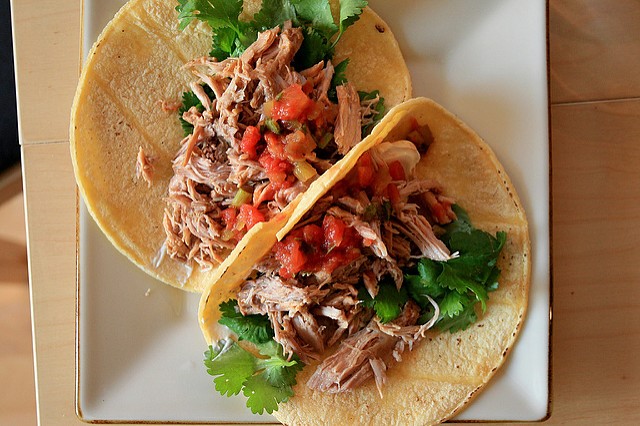
Customs and Cuisine of Mexico
Mexican food is a blend of indigenous (Indian) and Spanish influences. At the heart of the cuisine of this beautiful country are three very important crops: corn, beans, and chilies. These native foods are cheap and widely available. Corn has been a part of the Mexican diet forever, and it is consumed in all possible forms: as a cooked or roasted corncob (elote), as cooked grain or porridge (atole), as wrapped and steamed dough with filling (tamal), in hearty corn stew (pozole), but most importantly as a tortilla, a thin, round “pancake.” Corn is eaten daily, and often at every meal.
There are many of types of chilies. The most common ones that we find in our American markets are the jalapeño, poblano, serrano, chipotle, and habañero. Herbs like cilantro and thyme are widely used, along with spices like cumin and cinnamon. Fruits and vegetables such as tomatoes, tomatillos, prickly pear cactus (nopales), avocado, mango, papaya are all widely available and used in all manner of salsas and sauces.
The humble pinto bean finds its way into most meals, usually in the form of a soupy-textured refried bean served with tortillas. Chicken (pollo asado) and pork (carnitas) are the favorite meats, but beef (carne) is also eaten. Seafood is more bountiful in coastal cities.
Breakfast (desayuno) is typically a light meal of coffee, fruit and a sweet roll, but for a heartier meal huevos rancheros would be served. The most important meal of the day is lunch (comida) and normally served between 1 and 3 p.m. Supper (cena) is served late, usually after 8 p.m. and is a light snack, although in urban areas supper can be an elaborate affair eaten at restaurants.
Soft drinks such as Coca-Cola are hugely popular, along with other fruit juice based drinks. Of course beer (cerveza) and Sangria (an import from Spain) are popular beverages, but tequila might well be the national beverage. Tequila is produced from the blue agave plant that is grown mainly in the state of Jalisco, as well as a few other areas. The only country that produces tequila is Mexico, and it has achieved a “protected designation of origin” status (PDO). In other words, to receive the PDO status, the entire product must be traditionally and entirely manufactured (prepared, processed and produced) within the specific region and thus acquire unique properties. It is typically served as a “shot” with salt and lime, or as a margarita.
Dining Etiquette:
Do not begin eating until the host says, “Buen provecho!”
Mexicans do not switch knives and forks. The knife remains in the right hand, and the for remains in the left. When the meal is finished, the knife and fork are laid parallel to each other across the right side of the plate.
When not holding utensils, your hands are expected to be visible above the table: this means you do not keep them in your lap; instead, rest your wrists on top of the table (never your elbows).
Any salad will usually be served after the main course.
The most honored position is at the head of the table, with the most important guest seated immediately to the right of the host (women to the right of the host, and men to the right of the hostess). If there is a hosting couple, one will be at each end of the table.
Sources:
General Etiquette Source: www.etiquettescholar.com
Source materials: www.everyculture.com and www.foodbycountry.com
View Recipes from Mexico
Mexico
